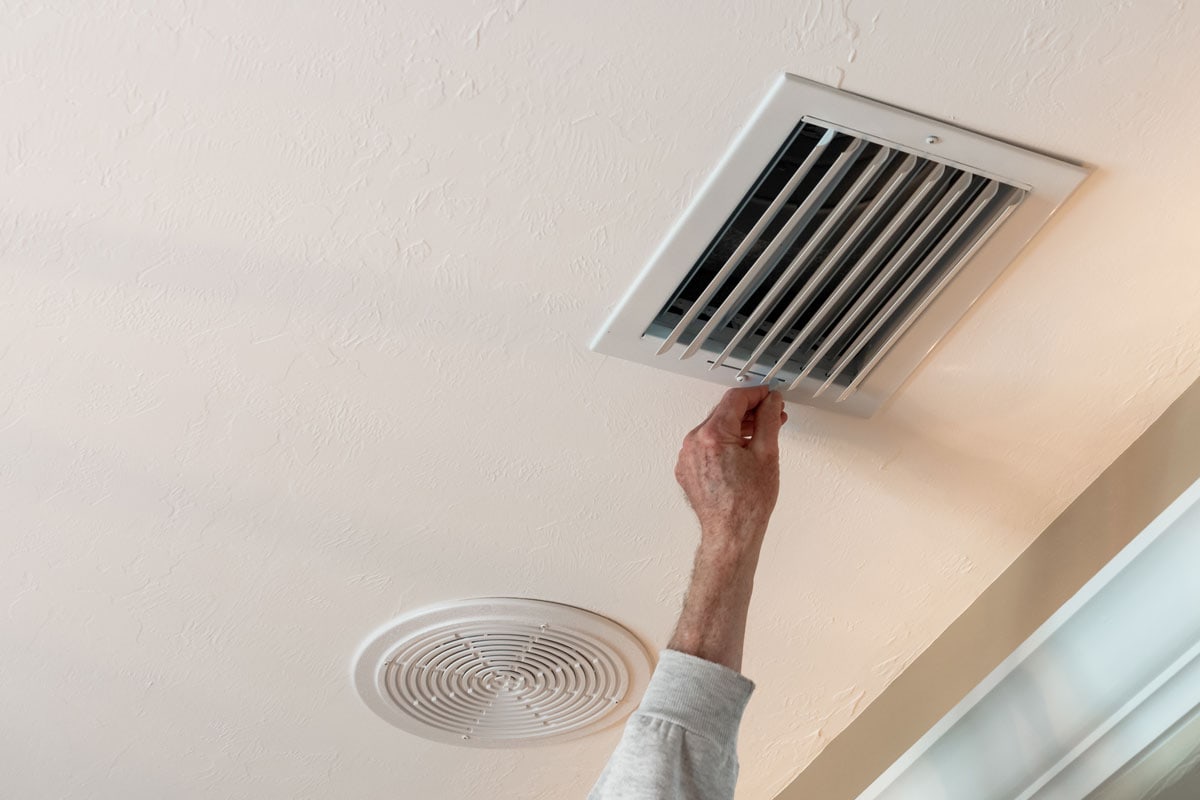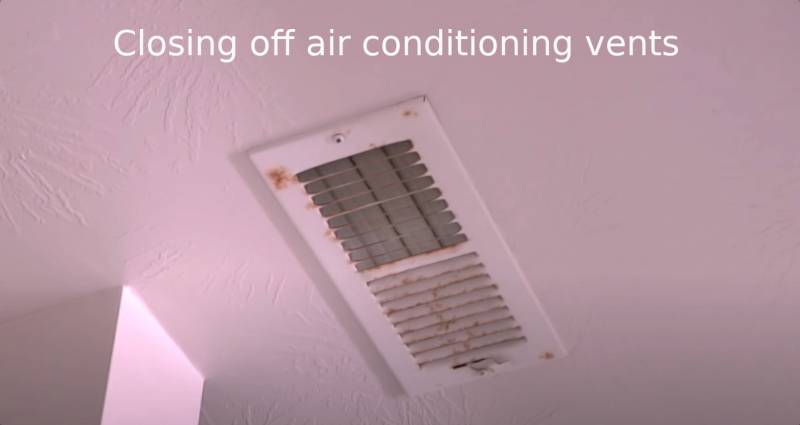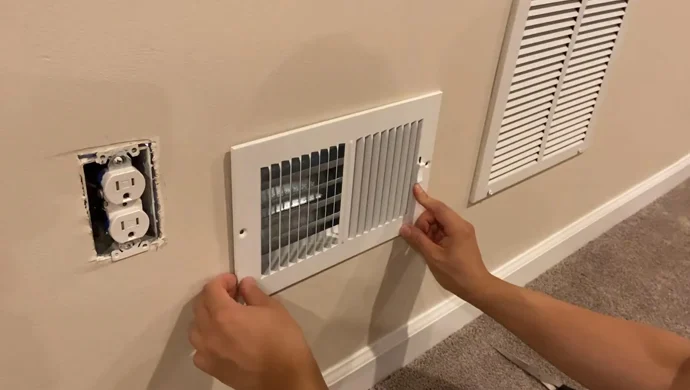How To Close An Air Vent

The question of whether or not to close air vents is a surprisingly contentious one in the HVAC world. While the intuitive answer might seem like "yes, close them to save energy!", the reality is more nuanced. Understanding the physics of your HVAC system, the potential benefits, and the potential pitfalls is crucial before you go around adjusting your vents. This article will break down the pros and cons of closing air vents, explain how to do it correctly (if you choose to), and explore how smart home technology can provide a more efficient and effective solution.
Understanding Your HVAC System: A Quick Primer
Before diving into vent closures, it's essential to grasp the fundamentals of how your forced-air HVAC system works. Most residential and commercial systems operate on a principle of balanced airflow. The furnace or air conditioner heats or cools air, the blower fan pushes that air through a network of ducts, and the air exits into your rooms through vents. The same amount of air needs to return to the unit through return vents to maintain proper pressure and prevent strain on the system.
Air Pressure is Key: Think of your ductwork like a circulatory system. When you restrict airflow in one area, it affects the entire system. Closing vents significantly alters the pressure balance, which can lead to inefficiencies and even damage.
The Pros and Cons of Closing Air Vents: Energy Savings vs. System Strain
The primary reason people consider closing air vents is to save energy. The idea is simple: if you're not using a room, why heat or cool it? However, the reality is more complicated.
Potential Benefits:
- Reduced Energy Consumption (Potentially): In theory, closing vents in unused rooms could reduce the overall demand on your HVAC system. The unit works less to heat or cool the same total volume of space.
- Targeted Heating/Cooling (Potentially): Focus heating or cooling on occupied spaces.
Potential Drawbacks:
- Increased Duct Pressure: Closing vents increases the pressure in the remaining open ducts. This can lead to leaks, reduced airflow in other areas, and overworked blower motor.
- System Imbalance: An imbalanced system is less efficient and can lead to higher energy bills in the long run.
- Short Cycling: Increased pressure can cause the HVAC unit to cycle on and off more frequently (short cycling), reducing its lifespan and wasting energy.
- Frozen Coils (Air Conditioners): Reduced airflow across the evaporator coil can cause it to freeze, requiring costly repairs.
- Voiding Warranties: Some HVAC warranties are voided if the system is operated in a way that restricts airflow.
The Bottom Line: Simply closing vents without understanding the impact on your system can lead to more problems than savings. Consider factors like ductwork design, the size and efficiency of your unit, and the climate you live in.
When Closing Vents Might Be Okay (and How to Do It Right)
While generally discouraged, there are specific situations where carefully considered vent closures might be acceptable. If you choose to close vents, proceed with caution and ideally consult with a qualified HVAC technician.
Conditions That Might Make Vent Closure Viable:
- Well-Zoned Systems: If your home is already equipped with a zoning system, closing vents within a specific zone that is unoccupied might be acceptable. Zoning systems are designed to handle variations in airflow.
- Professional Assessment: An HVAC professional has assessed your system and determined that limited vent closures won't cause significant pressure imbalances.
- Temporary Situations: Closing vents in a guest room or unused space for a short period, understanding you will not close more than 20% of vents in the system.
How to Close Vents Safely:
- Close Gradually: Don't close all the vents at once. Start with one or two and monitor the system's performance.
- Never Close More Than 20% of Vents: As a general rule, avoid closing more than 20% of the vents in your system to minimize pressure imbalances.
- Monitor Airflow: Check the airflow from other vents to ensure they're not significantly reduced.
- Listen for Unusual Noises: Pay attention to any unusual noises coming from the furnace or air conditioner, such as whistling or rattling, which could indicate excessive pressure.
- Consider Professional Balancing: If you close vents, have an HVAC technician balance the system to ensure optimal performance and efficiency.
Smart HVAC: A Better Approach to Energy Savings
Instead of relying on the potentially risky practice of closing vents, consider investing in smart HVAC technology. Smart thermostats and sensors offer a much more efficient and effective way to manage your home's temperature and save energy. They also integrate nicely in Smart Home systems.
Benefits of Smart HVAC:
- Zoned Heating and Cooling: Smart thermostats allow you to create zones in your home, heating or cooling only the areas that are occupied. This eliminates the need to close vents manually.
- Automated Scheduling: Set schedules to automatically adjust the temperature based on your daily routine. For example, lower the temperature when you're at work or asleep.
- Remote Control: Adjust the temperature from anywhere using your smartphone or tablet.
- Energy Usage Monitoring: Track your energy consumption to identify areas where you can save money.
- Geofencing: Use your phone's location to automatically adjust the temperature when you leave or approach your home.
- Integration with Smart Home Systems: Connect your smart thermostat to other smart home devices, such as lights and blinds, for a more comprehensive energy-saving solution.
Example: The Nest Learning Thermostat learns your habits and automatically adjusts the temperature to optimize energy savings. It also provides detailed energy reports, so you can see how much energy you're using and where you can save.
ROI: While the upfront cost of a smart thermostat may be higher than a traditional thermostat, the energy savings can quickly offset the initial investment. Energy Star estimates that a smart thermostat can save you up to 15% on your heating and cooling bills.
Duct Sealing and Insulation: Addressing the Root of the Problem
Before considering vent closures or even investing in smart HVAC technology, it's essential to address the underlying issues that may be causing energy loss. Leaky ducts and inadequate insulation are common culprits.
Duct Sealing:
Leaky ducts can waste a significant amount of energy, as heated or cooled air escapes before it reaches its intended destination. Sealing your ducts can improve energy efficiency by as much as 20%.
How to Seal Ducts:
- Identify Leaks: Look for gaps, cracks, or loose connections in your ductwork.
- Use Duct Mastic: Seal leaks with duct mastic, a durable and flexible sealant specifically designed for ductwork.
- Consider Professional Sealing: For a more thorough job, hire a professional to seal your ducts using specialized equipment and techniques.
Insulation:
Adequate insulation is crucial for preventing heat loss in the winter and heat gain in the summer. Make sure your attic, walls, and floors are properly insulated to minimize energy waste.
Insulation Types:
- Fiberglass: A common and affordable insulation material.
- Cellulose: Made from recycled paper and treated with fire retardants.
- Spray Foam: A highly effective insulation that seals air leaks and provides excellent thermal resistance.
Government Incentives and Rebates
Many government agencies and utility companies offer incentives and rebates for energy-efficient upgrades, including smart thermostats, duct sealing, and insulation. Check with your local utility company and the Energy Star website to see what incentives are available in your area.
Example: The federal tax credit for energy-efficient home improvements can help offset the cost of upgrades like insulation and duct sealing. Be sure to consult with a tax professional to determine your eligibility.
Working with an HVAC Professional
If you're unsure about the best way to improve your home's energy efficiency, consult with a qualified HVAC professional. They can assess your system, identify areas for improvement, and recommend the most appropriate solutions. A professional can also perform a load calculation to ensure that your HVAC system is properly sized for your home, which is essential for optimal performance and efficiency. Look for contractors who are certified by organizations like NATE (North American Technician Excellence).
Conclusion: Informed Decisions for Energy Savings
Closing air vents is rarely the best solution for saving energy. It can create pressure imbalances, reduce system efficiency, and even damage your HVAC equipment. Instead, focus on addressing the underlying causes of energy loss, such as leaky ducts and inadequate insulation. Invest in smart HVAC technology to create zoned heating and cooling and automate your temperature settings. By making informed decisions and working with qualified professionals, you can achieve significant energy savings without compromising the performance and longevity of your HVAC system. Remember that saving energy and money is a continuous process, not a one-time fix.










